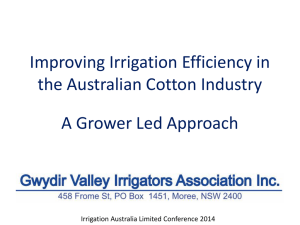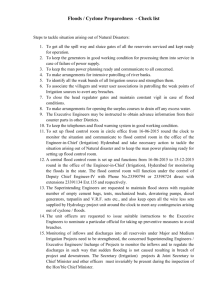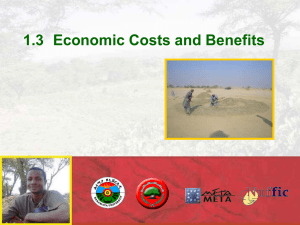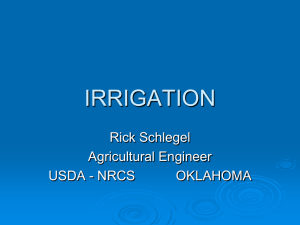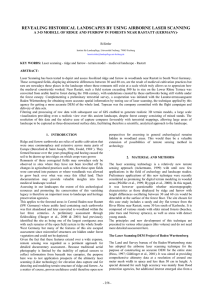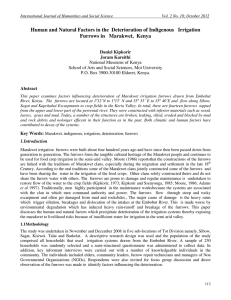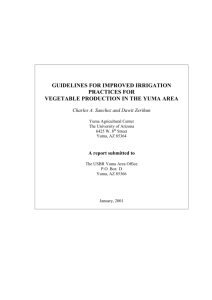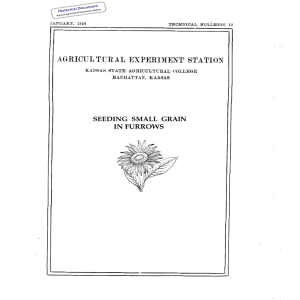Case of spate irrigation in Tanzania
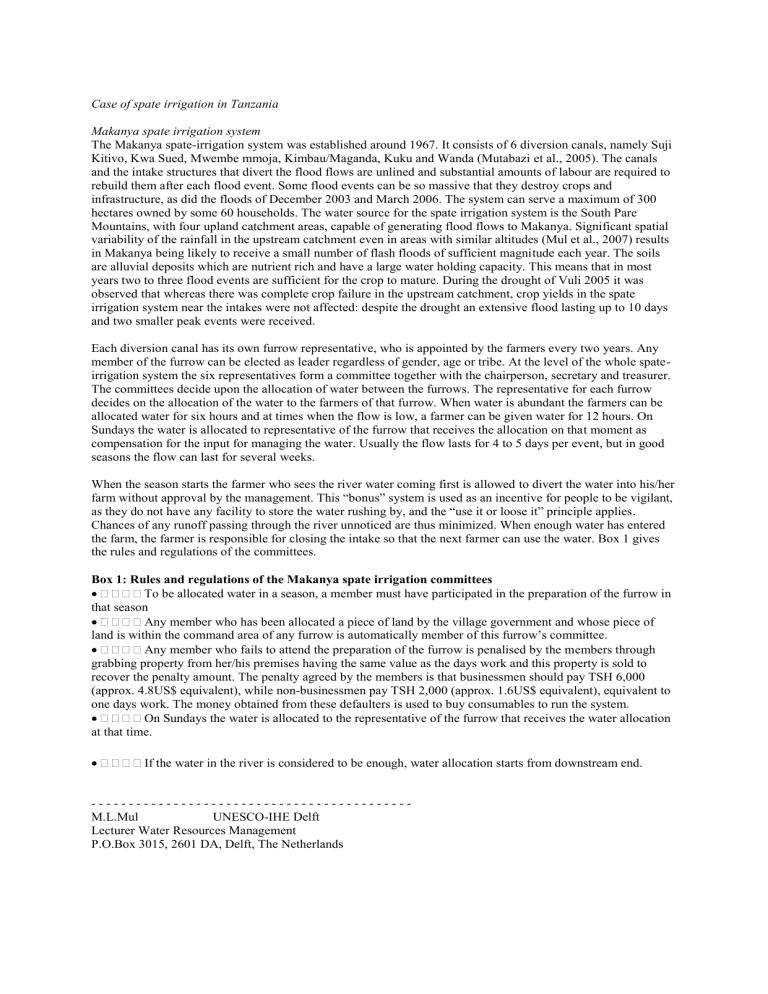
Case of spate irrigation in Tanzania
Makanya spate irrigation system
The Makanya spate-irrigation system was established around 1967. It consists of 6 diversion canals, namely Suji
Kitivo, Kwa Sued, Mwembe mmoja, Kimbau/Maganda, Kuku and Wanda (Mutabazi et al., 2005). The canals and the intake structures that divert the flood flows are unlined and substantial amounts of labour are required to rebuild them after each flood event. Some flood events can be so massive that they destroy crops and infrastructure, as did the floods of December 2003 and March 2006. The system can serve a maximum of 300 hectares owned by some 60 households. The water source for the spate irrigation system is the South Pare
Mountains, with four upland catchment areas, capable of generating flood flows to Makanya. Significant spatial variability of the rainfall in the upstream catchment even in areas with similar altitudes (Mul et al., 2007) results in Makanya being likely to receive a small number of flash floods of sufficient magnitude each year. The soils are alluvial deposits which are nutrient rich and have a large water holding capacity. This means that in most years two to three flood events are sufficient for the crop to mature. During the drought of Vuli 2005 it was observed that whereas there was complete crop failure in the upstream catchment, crop yields in the spate irrigation system near the intakes were not affected: despite the drought an extensive flood lasting up to 10 days and two smaller peak events were received.
Each diversion canal has its own furrow representative, who is appointed by the farmers every two years. Any member of the furrow can be elected as leader regardless of gender, age or tribe. At the level of the whole spateirrigation system the six representatives form a committee together with the chairperson, secretary and treasurer.
The committees decide upon the allocation of water between the furrows. The representative for each furrow decides on the allocation of the water to the farmers of that furrow. When water is abundant the farmers can be allocated water for six hours and at times when the flow is low, a farmer can be given water for 12 hours. On
Sundays the water is allocated to representative of the furrow that receives the allocation on that moment as compensation for the input for managing the water. Usually the flow lasts for 4 to 5 days per event, but in good seasons the flow can last for several weeks.
When the season starts the farmer who sees the river water coming first is allowed to divert the water into his/her farm without approval by the management. This “bonus” system is used as an incentive for people to be vigilant, as they do not have any facility to store the water rushing by, and the “use it or loose it” principle applies.
Chances of any runoff passing through the river unnoticed are thus minimized. When enough water has entered the farm, the farmer is responsible for closing the intake so that the next farmer can use the water. Box 1 gives the rules and regulations of the committees.
Box 1: Rules and regulations of the Makanya spate irrigation committees
To be allocated water in a season, a member must have participated in the preparation of the furrow in that season
Any member who has been allocated a piece of land by the village government and whose piece of land is within the command area of any furrow is automatically member of this furrow’s committee.
Any member who fails to attend the preparation of the furrow is penalised by the members through grabbing property from her/his premises having the same value as the days work and this property is sold to recover the penalty amount. The penalty agreed by the members is that businessmen should pay TSH 6,000
(approx. 4.8US$ equivalent), while non-businessmen pay TSH 2,000 (approx. 1.6US$ equivalent), equivalent to one days work. The money obtained from these defaulters is used to buy consumables to run the system.
On Sundays the water is allocated to the representative of the furrow that receives the water allocation at that time.
If the water in the river is considered to be enough, water allocation starts from downstream end.
- - - - - - - - - - - - - - - - - - - - - - - - - - - - - - - - - - - - - - - - - - -
M.L.Mul UNESCO-IHE Delft
Lecturer Water Resources Management
P.O.Box 3015, 2601 DA, Delft, The Netherlands

